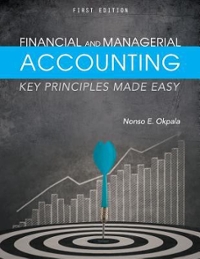

Answer the Questions please as all related Suppose you are a new capital-budgeting analyst for Emirates Corporation which is considering investments in the five projects listed in the table below. The chief financial officer of your company has asked you to rank the projects and recommend the three best that the company should accept. In this assignment, only the quantitative considerations are relevant. No other project characteristics are deciding factors in the selection, except that management has determined that projects 3 and 5 are mutually exclusive. Moreover, all the projects are believed to be of the same risk class. The weighted- average cost of capital of the firm has never been estimated. In the past, analysts have simply assumed that 10 percent was an appropriate discount rate (although certain officers of the company have recently asserted that the discount rate should be much higher). To stimulate your analysis, consider the following questions: 1. Can you rank the projects simply by inspecting the cash flows? Show your ranking? 2. What criteria might you use to rank the projects? Which quantitative ranking methods are better? Why? To answer this point, you need to make a literature review and make proper citation of the literature. 3. What is the ranking you found by using quantitative methods? Does this ranking differ from the ranking obtained by simple inspection of the cash flows? Note: 1. a. For each Quantitative method you have to write the formula explain how you made the calculations. b. To answer question 2, use references with proper citation. 1 2 3 4 ($10,000) ($12,000) ($8,000) ($15,000) ($11,000) Project number: Initial investment Year 1 Year 2 Year 3 Year 4 Year 5 $1,700 $1,700 $1,700 $1,700 $1,700 $8,500 $3,500 $1,500 $0 $0 $0 $0 $0 $0 $0 $4,000 $2,500 $2,350 $2,100 $2,100 $2,100 $2,100 $2,100 $0 $1,700 $1,700 $5,000 Year 6 Year 7 Year 8 Year 9 Year 10 Year 11 Year 12 Year 13 Year 14 Year 15 Sum of cash-flow $0 $0 $0 $0 $0 $0 $0 $2,600 $2,700 $2,800 $2,400 $2,240 $2,250 $2,255 $2,650 $2.800 -$2,200 $29,345 $2,100 $2,100 $2,100 $2,100 $2,100 $2,100 $2,100 $2,100 $2,100 $2,100 $31,500 $0 $31,650 $31,650 $16,900 $13,500 benefits Excess of cash flow over initial $6,900 $1,500 $23,650 $14,345 $20,500 investment Answer the Questions please as all related Suppose you are a new capital-budgeting analyst for Emirates Corporation which is considering investments in the five projects listed in the table below. The chief financial officer of your company has asked you to rank the projects and recommend the three best that the company should accept. In this assignment, only the quantitative considerations are relevant. No other project characteristics are deciding factors in the selection, except that management has determined that projects 3 and 5 are mutually exclusive. Moreover, all the projects are believed to be of the same risk class. The weighted- average cost of capital of the firm has never been estimated. In the past, analysts have simply assumed that 10 percent was an appropriate discount rate (although certain officers of the company have recently asserted that the discount rate should be much higher). To stimulate your analysis, consider the following questions: 1. Can you rank the projects simply by inspecting the cash flows? Show your ranking? 2. What criteria might you use to rank the projects? Which quantitative ranking methods are better? Why? To answer this point, you need to make a literature review and make proper citation of the literature. 3. What is the ranking you found by using quantitative methods? Does this ranking differ from the ranking obtained by simple inspection of the cash flows? Note: 1. a. For each Quantitative method you have to write the formula explain how you made the calculations. b. To answer question 2, use references with proper citation. 1 2 3 4 ($10,000) ($12,000) ($8,000) ($15,000) ($11,000) Project number: Initial investment Year 1 Year 2 Year 3 Year 4 Year 5 $1,700 $1,700 $1,700 $1,700 $1,700 $8,500 $3,500 $1,500 $0 $0 $0 $0 $0 $0 $0 $4,000 $2,500 $2,350 $2,100 $2,100 $2,100 $2,100 $2,100 $0 $1,700 $1,700 $5,000 Year 6 Year 7 Year 8 Year 9 Year 10 Year 11 Year 12 Year 13 Year 14 Year 15 Sum of cash-flow $0 $0 $0 $0 $0 $0 $0 $2,600 $2,700 $2,800 $2,400 $2,240 $2,250 $2,255 $2,650 $2.800 -$2,200 $29,345 $2,100 $2,100 $2,100 $2,100 $2,100 $2,100 $2,100 $2,100 $2,100 $2,100 $31,500 $0 $31,650 $31,650 $16,900 $13,500 benefits Excess of cash flow over initial $6,900 $1,500 $23,650 $14,345 $20,500 investment








